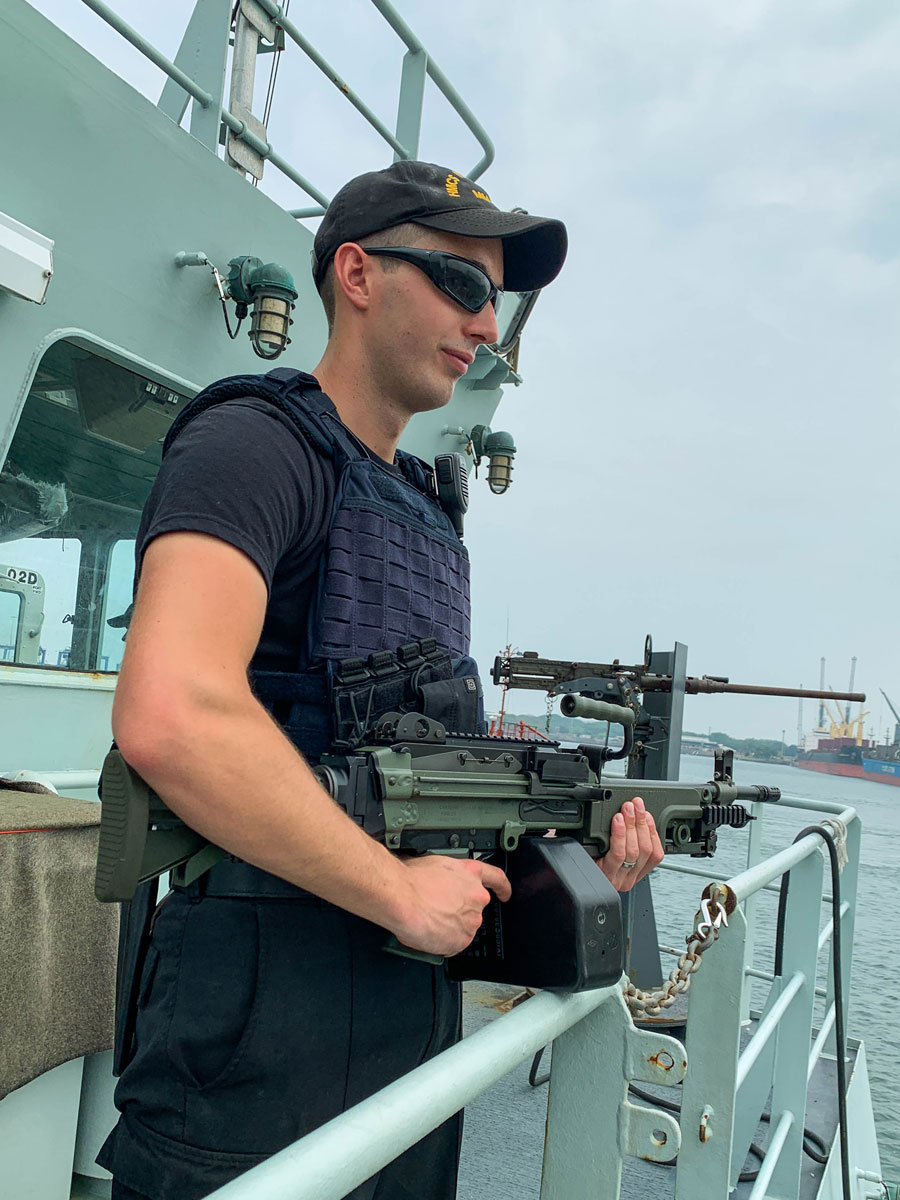Hot success – the road to cocaine seizure on Operation Caribbe
By Lookout on May 06, 2019 with Comments 0
Capt Annie Morin, Public Affairs Officer, Operation Caribbe ~
As HMCS Yellowknife sails under the hot sun in the Eastern Pacific Ocean, the air is heavy with humidity, bringing the temperature to about 45 degrees with the humidex. It’s nearly impossible to stay dry even when limiting your movements. Your clothes stick to you in all the wrong places; the nape of your neck perpetually clammy. Inevitably, sweat is just something you have to deal with.
The ship’s task at hand on Operation Caribbe is to find and board vessels of interest carrying illicit drugs, and on April 14 they made their first drug bust.
Start of the action
On the bridge of the ship, everything was dark apart from the faint lights emanating from the equipment. From afar, Yellowknife was nearly invisible sailing in its search area when the radar picked up a signal from a nearby vessel.
The helmsman piped boarding stations signaling to those involved in the boarding to get ready; the ship’s Rigid-Hulled Inflatable Boats was lowered into the water with the United States Coast Guard (USCG) law enforcement detachment who would actually perform the boarding.
The crew positioned the ship favorably using the moonlight so it could remain unseen by the vessel for as long as possible. A Costa Rican flag was spotted on the vessel. Other than required communications with the operations room, the bridge was quiet in anticipation.
In complete darkness, the RHIBs pulled away.
As the RHIBs came to the sides of the suspected smuggling vessel, the Captain was hailed by USCG members; the suspects stood noticeably surprised by the sudden nocturnal apparition, but remained calm. One by one, the USCG members climbed on board the vessel, having received authorization to board by authorities. Upon receiving the go-ahead, the law enforcement professionals began the rigorous work of finding the drugs, using known information, their experience, and wits.
They worked all night without rest, wallowing back and forth with the movement of the waves, and relying on the water and limited food they brought with them for energy. A few more hours went by and the USCG members have done all they could to find the narcotics but came up empty. Despite this, they remain convinced the drugs are hidden, just out of reach.
The second search
The decision was made to bring the tired USCG members back to Yellowknife. However, the search for the narcotics was not yet over. All the signs were there, that the vessel was carrying something. There was one more possibility to find the drugs though, a dockside search.
Arrangements were made with the Costa Rican Coast Guard to come and take responsibility of the vessel. Over the radio the chatter is unintelligible, except for those few crew members who could translate Spanish for the rest of the crew on the bridge.
It would take a few hours before the Costa Rican Coast Guard could reach the vessel. The waiting game began. Yellowknife remained close to deter the vessel from sailing away. If the proximity of the warship was not enough as a deterrent, the ship’s company members wearing helmets, bulletproof vests, and being armed surely would do it.
The normally buzzing ship was eerily quiet; everyone was hopeful the Costa Rican Coast Guard would be able to find something when they performed a destructive search while in port. The search is meant to reach areas of the vessel that have been purposefully concealed by the smugglers and inaccessible otherwise.
In the late afternoon, the Costa Rican Coast Guard pulled in beside the vessel ready to take over from Yellowknife and escort the vessel into port. Members of the ship’s company watched from the bridge as the newcomers boarded the vessel and performed a security sweep.
Then, equipped with the information the USCG Law Enforcement collected on the vessel, the Costa Rican Coast Guard departed, eager to carry out their own search. At their request, Yellowknife followed the two vessels for some time and then broke away from the group to continue patrolling.
The second waiting game begins
As the crew of Yellowknife returned to a normal routine, the thought of the previous night’s boarding and the prospect of a drug discovery by the Costa Rican Coast Guard remained at the forefront of everyone’s thoughts.
Less than 24 hours after the Costa Rican Coast Guard met with the vessel, Yellowknife was rewarded in the form of a short and precise message: “1,040 kilos of cocaine and one semi-automatic rifle found on vessel.”
Crewed by 45 members, including members of the United States Coast Guard, Yellowknife continues its deployment along with HMCS Whitehorse on Operation Caribbe, Canada’s contribution to Operation Martillo, a U.S. Joint Interagency Task Force South (JIATFS) operation responsible for conducting interagency and international detection and monitoring operations and facilitating the interdiction of illicit trafficking.
Filed Under: Top Stories
About the Author:






